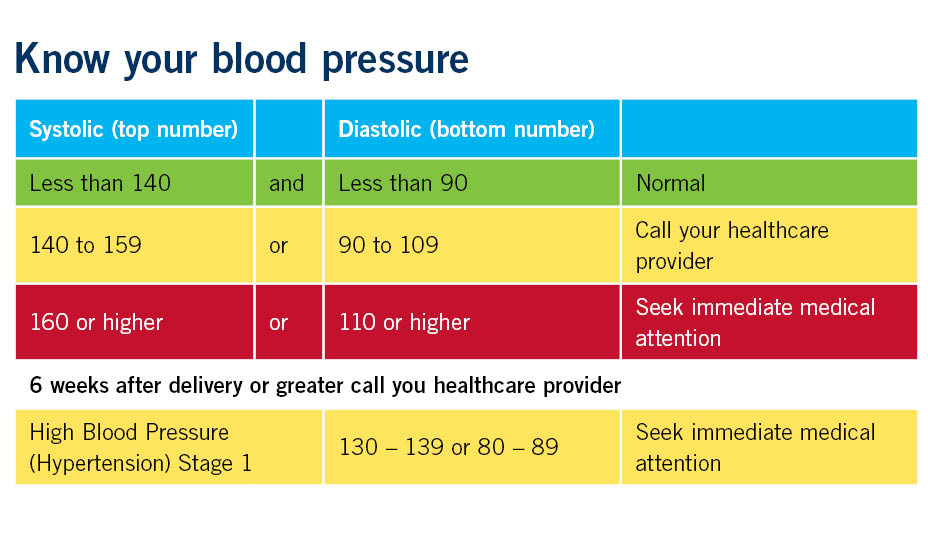-
Services
Featured Specialties
-
Locations
Location Type
-
Patients & Visitors
Published January 02, 2024

Preeclampsia is one of the most common conditions that can arise during and after pregnancy and can lead to severe outcomes. Learning to spot the signs and symptoms can help patients get the care they need and reduce the risk of preeclampsia-related complications.
High blood pressure can manifest in different ways during pregnancy. Some people have chronic hypertension which means they have high blood pressure when they enter pregnancy, or they are diagnosed before 20 weeks of gestation.
Those with gestational hypertension have high blood pressure that develops in the second half of pregnancy, after 20 weeks.
Preeclampsia impacts between 5 and 7% of the obstetrical population and can occur after 20 weeks of gestation as well as during the postpartum period. The diagnosis includes gestational hypertension in addition to symptoms.
Symptoms of preeclampsia can include:
Katherine Campbell, MD, MPH, medical director of Inpatient Obstetrics at Yale New Haven Hospital and associate professor of Obstetrics, Gynecology & Reproductive Sciences at Yale School of Medicine says preeclampsia is most common in the third trimester and around the time of delivery, which is one of the reasons why prenatal visits increase in frequency towards the end of a pregnancy. However, it’s unclear why preeclampsia becomes more prevalent as a pregnancy progresses.
“What we do know is that preeclampsia is a syndrome that is mediated by the placenta and the blood vessel connections between the placenta and the maternal circulation. We do know when there's more placenta present, the risk for preeclampsia increases,” said Dr. Campbell.
For example, those carrying twins or triplets have a higher risk of preeclampsia. Other risk factors for the development of preeclapmsia can include chronic hypertension, obesity, age, use of assisted reproductive techniques such as IVF, and a history of preeclampsia. Yet many patients who develop preeclampsia have no underlying risk factors.
The only “treatment” for preeclampsia is delivery of the baby and placenta. While preeclampsia cannot be completely prevented, there are some things patients can do to positively impact their health.
Chronic hypertension can be managed with regular clinician visits, healthy lifestyle changes and initiation of blood pressure medication when needed. Lifestyle changes can include eating a healthy diet, decreasing salt intake and establishing healthy sleep patterns. Many blood pressure medications are well studied and are safe to take in pregnancy and during breastfeeding.
Patients at increased risk of preeclampsia are advised to take a baby aspirin starting after 12 weeks until they are full term at 37 weeks. Aspirin has been shown to lower the risk of developing preeclampsia and may delay the onset of it.
Patients may also benefit from increased surveillance or hospitalization. For those with high risk of eclampsia, a severe complication of preeclampsia, magnesium sulfate may be prescribed. It is a salt given in an IV in a highly monitored hospital setting that has been shown to reduce the risk of seizure.

Most patients who have preeclampsia are low risk patients so it's usually surprising to them if they develop it.
“It can be quite shocking when preeclampsia is diagnosed, and it can be traumatizing for a patient and their family when they hear they have to be hospitalized and possibly delivered prior to their due date. When I’m counseling a patient who has had preeclampsia, it is beneficial to talk with the patient and their family about a surveillance plan, so that if or when they have another pregnancy, we can work together to develop a plan that feels good to them,” said Dr. Campbell.
Patients with a history of preeclampsia who want to plan for another baby benefit from meeting with a maternal fetal medicine specialist to review their obstetrical history and see if anything needs to be done to lower risk. For example, someone who developed preeclampsia and their blood pressure remained elevated after delivery may meet a diagnosis of chronic hypertension. In that scenario, its important for their chronic hypertension to be managed and for that patient to have regular check-ins with a health care provider.
Even those who did not develop high blood pressure or preeclampsia will still benefit from postpartum visits. Regular check ins with a clinician can assist with issues like healthy lifestyle and mental health support – something all new parents need.